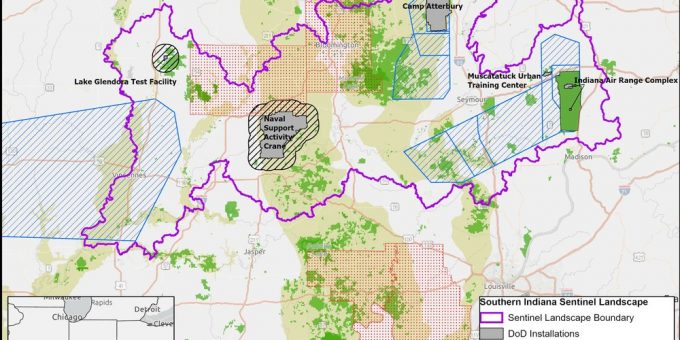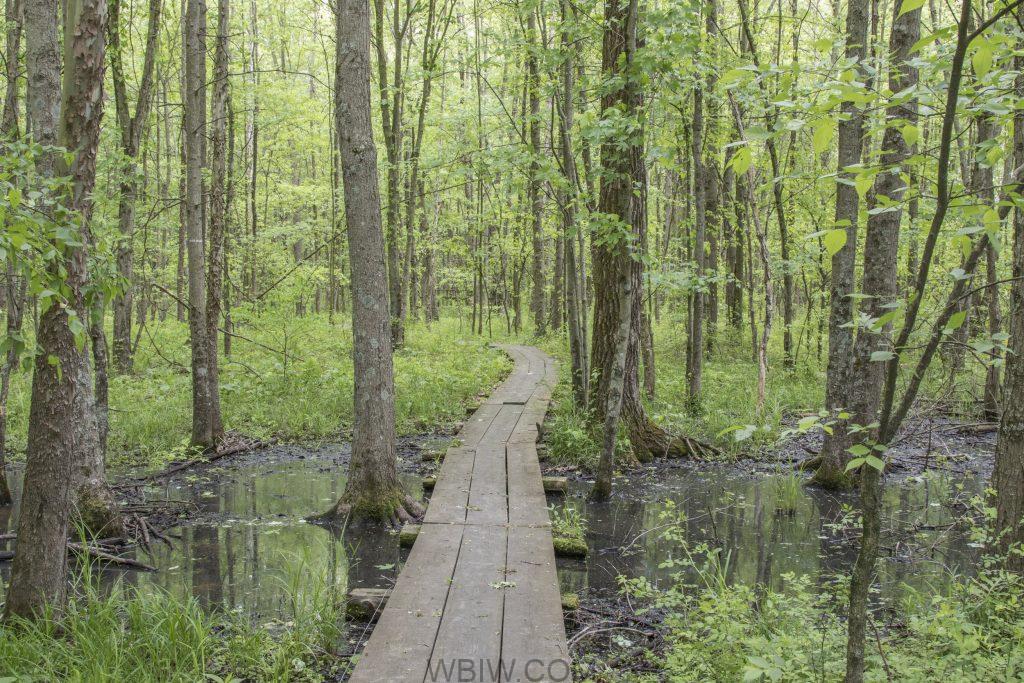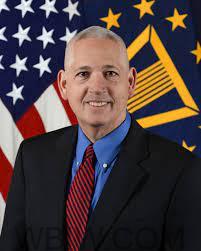
SOUTHERN INDIANA – The designation of more than 3.5 million acres in southern Indiana as a Sentinel Landscape will protect critical habitats and species, conserve natural resources, strengthen military readiness, and help the state prepare for environmental change. Southern Indiana is one of 3 new additions to the federal program, bringing the total to 10 nationwide.

The Sentinel Landscape program, established in 2013, works to connect private landowners with government assistance programs that fund land management and restoration projects. The designation announced today by the U.S. Department of Agriculture (USDA), Department of Defense (DoD), and Department of Interior (DOI) encompasses an area that includes 4 critical DoD installations and associated ranges, 6 state parks, 7 state forests, 9 state fish and wildlife areas, 3 National Wildlife Refuges, 39 state-dedicated nature preserves, and the Hoosier National Forest.

“This designation ensures we continue to protect Southern Indiana’s beautiful landscape and at the same time preserve our nation’s critical military mission here at home,” said Governor Eric J. Holcomb. “In doing so, we’ll bolster regional economic development and the employment opportunities that come with it, alongside our federal and military partners. Indiana’s proud to do both, enhancing national security and our state’s natural resources.”

The Sentinel Landscape partnership includes both federal and state entities. Key partners in Indiana include Conservation Law Center at Indiana University Maurer School of Law; The Nature Conservancy, Indiana Economic Development Corporation – Defense Development Office; Indiana Department of Natural Resources; Indiana Defense Task Force; The White River Military Coordination Alliance; and numerous local and state-level conservation organizations.

According to Christian Freitag, Executive Director of Conservation Law Center and Clinical Associate Professor of Law at Indiana University, “It’s no exaggeration that the Sentinel Landscape is one of the biggest conservation projects in Indiana history, and it’s an example of how conservation can be an across-the-board win when the right partners work towards common ground. Even more, the Sentinel partnership we’ve assembled shows our shared recognition that conservation projects help our economy and improve our quality of life.”

“This project is another example of how the Conservation Law Center’s expertise and ability to build coalitions is the right medicine at the right time for the most pressing environmental challenges facing our state and country,” said Austen Parrish, Dean of the Maurer School of Law at Indiana University. “We couldn’t be prouder to partner with CLC and the incredible Sentinel team on this important opportunity.”
In addition to improving landscape resilience by maintaining and connecting healthy forests, the project also addresses habitat needs of various native species, including the federally endangered Indiana bat and federally threatened northern long-eared bat. Likewise, Southern Indiana Sentinel Landscape partners plan to focus on river and watershed protection by implementing regional watershed management plans along with state and federal wetland and waterway programs.

“Ensuring Southern Indiana remains a safe haven for native species and conservation of natural lands is critical,” said Larry Clemens, State Director of The Nature Conservancy in Indiana. “This designation gives us important private and public sector tools and expands upon critical partnerships to protect lands, improve water quality, enhance climate resiliency, and preserve the beauty and splendor of Southern Indiana.”
In addition to Southern Indiana Sentinel Landscape, Camp Bullis Sentinel Landscape in Texas, and the Northwest Florida Sentinel Landscape were also designated. https://repiprogram.createsend1.com/t/d-e-aujyudy-l-p/

“DoD is proud to support the growth of the Sentinel Landscapes Partnership and add Camp Bullis, Northwest Florida, and Southern Indiana to the list of designated sentinel landscapes,” said Deputy Assistant Secretary of Defense for Real Property Ron Tickle. “These new landscape designations will leverage DoD funding and programs to protect the missions at 14 key DoD installations and ranges, protecting essential testing and training operations, enhancing resilience to climate change, and preserving our nation’s natural resources and working lands.”
More about Sentinel Landscapes
USDA, DoD, and DOI define Sentinel Landscapes as areas in which natural and working lands are well suited to protect defense facilities from land use that is incompatible with the military’s mission.
Once the partnership designates a location as a Sentinel Landscape, USDA, DoD, and DOI work with local partners to equip private landowners with the resources necessary to carry out sustainable management practices on their properties. Sustainable management practices such as farming, ranching, and forestry not only offer economic and ecological benefits but also protect defense facilities from incompatible development that can constrain the military’s ability to carry out training and testing activities.
Sentinel Landscapes accomplish their objectives by connecting private landowners with voluntary state and federal assistance programs that provide agricultural loans, disaster relief, educational opportunities, financial and technical assistance, and funding for conservation easements.
For more information about Sentinel Landscapes visit: sentinellandscapes.org.



